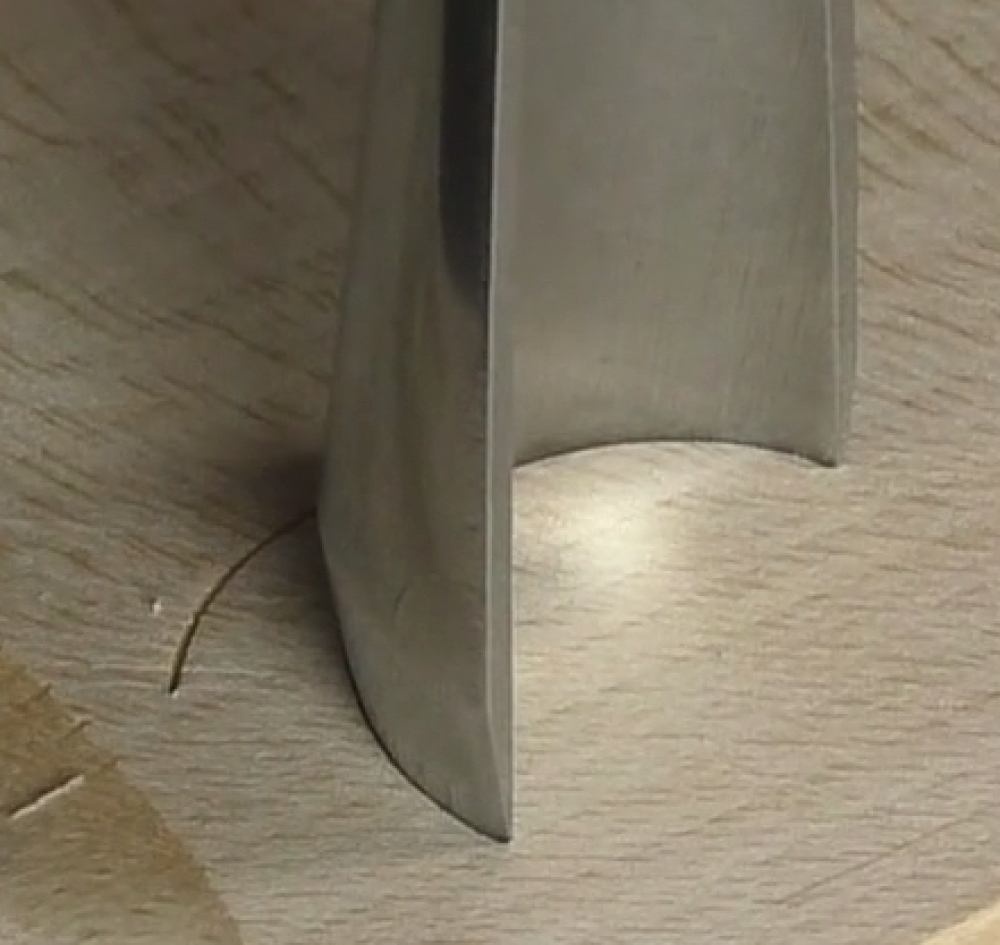How to get More from your Carving Tools!
16.09.22

Reading time: 1:30 mins
Thinking about Tools:
1 Overlapping Sweeps
Grab hold of one of your larger gouges and thump its ‘sweep’ - it’s curved profile - into a piece of wood.
In this picture, I've stabbed a #9 x 3/4in. (20mm):
Now look to your narrower gouges. See if you can fit their smaller sweep into the larger cut you just made.
Depending on the tools you have, you’ll find one or more of the flatter ones will fit.
Below, I'm fitting a #6 x 1/2in. (14mm) gouge into the impression of the sweep:

Woah. What?!
Many carvers are surprised you can do this!
You might think that all those carving tools with a particular number in the Sheffield List, which you'll find on the shank, are just arcs of the same circle. In which case you could, say, stab all your different width number 6’s, into the wood and make a continuous circle.
But not so. You make a spiral. Try it!
Why does this happen? There’s a historic, pretty esoteric, proportional ratio between the width of any given gouge and the arc of the circle from which it's made. So the Sheffield List should really be read in vertical columns rather than horizontally.
Should I care?
Well, beside cutting easy spirals, the upshot of this proportional nature of sweeps is that tools of different sizes have overlapping tool sweeps: flatter, narrower tools will often fit into deeper, wider ones.
This principal works diagonally across the Sheffield List and it's worth getting hold of a copy of the Sheffield List or similar and playing around. You'll find our Sheffield list is not so much the simpleton you imagined. more an idiot savant.
So… ?
You get to use wider, deeper tools in more than one way, which means you can often be more efficient:
Use your bigger, deeper gouge for hefty work then, by lightening up on the cutting, you can flatten the surface with a narrower (and effectively flatter) part of the sweep.
Light cuts with that big #9 can be the equivalent of using a narrow #3 or 4...

Next Blog (October 2022): Thinking About Tools 2
- another great way of thinking about your carving tools!
Related Videos:
